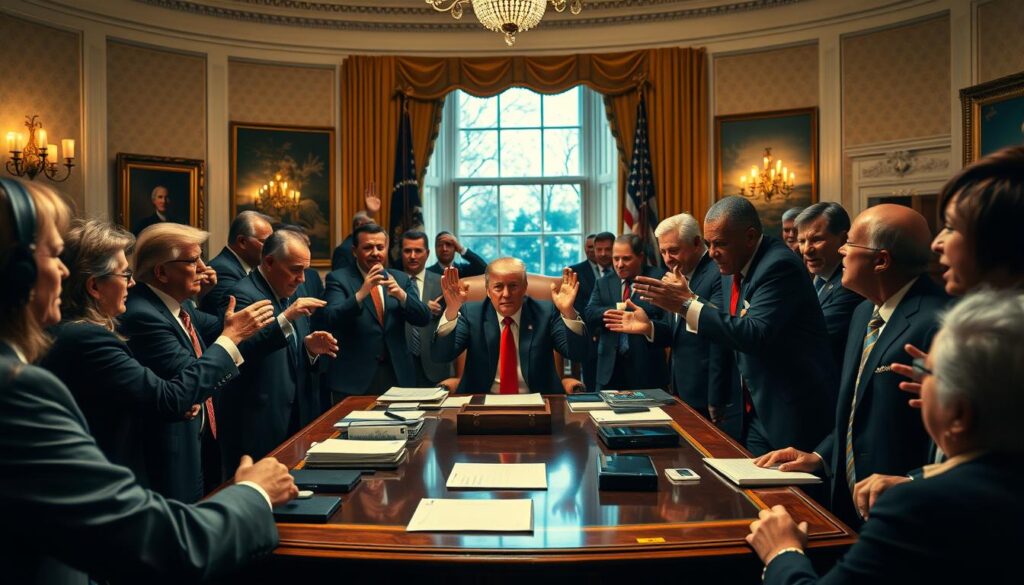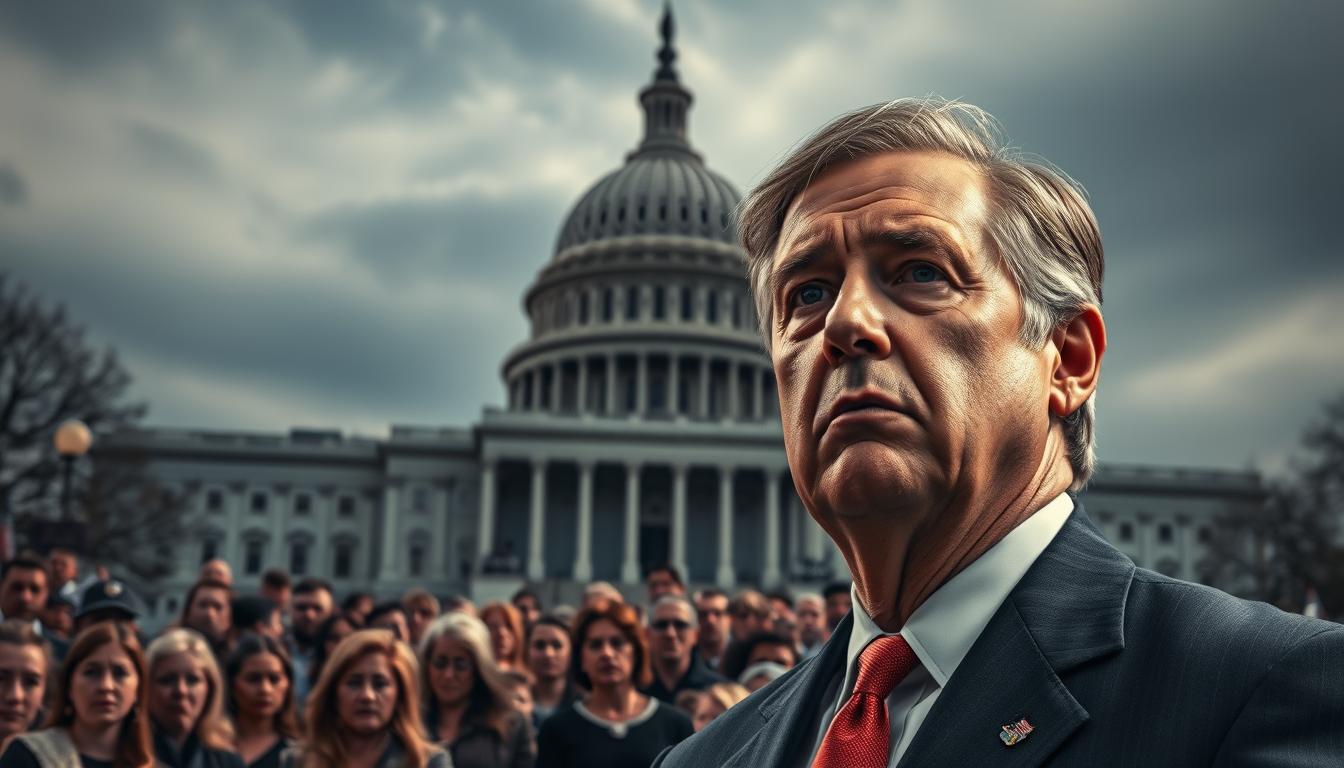Millions of Americans woke up to a shocking message on January 19, 2025. The popular app suddenly displayed a “Sorry” notification, locking out 170 million users. This abrupt shutdown followed a Supreme Court decision upholding the controversial “Divest or Ban” law passed in 2024.
The ruling marked the end of TikTok’s legal battle against U.S. regulators. Despite the company‘s $1.5 billion Project Texas initiative to address data security concerns, the court unanimously agreed the risks remained too high. Political tensions between Washington and Beijing further complicated the situation.
Businesses relying on the platform faced immediate disruptions. Over 5 million U.S. enterprises lost their primary marketing channel overnight. Meanwhile, alternatives like RedNote gained traction as negotiations for a potential sale stalled.
Key Takeaways
- TikTok ceased operations in the U.S. on January 19, 2025
- The Supreme Court upheld the ban citing national security concerns
- 170 million American users lost access instantly
- Project Texas failed to satisfy U.S. data protection requirements
- 5 million businesses were impacted by the shutdown
Why Is TikTok Getting Banned? The National Security Debate
U.S. lawmakers raised alarms about potential risks tied to the app’s parent company, ByteDance. Fears grew that Chinese government policies could force the firm to share data with Beijing. FBI Director Wray warned in 2023 that the app might compromise devices.

Claims of Data Privacy Risks and Chinese Government Ties
China’s 2017 National Intelligence Law requires companies to assist with state security efforts. Critics argued ByteDance’s algorithms could manipulate content or track keystrokes. “This isn’t just about dance videos—it’s about safeguarding our networks,” said Rep. McCaul, comparing it to the “spy balloon” incident.
Project Texas: TikTok’s Failed Attempt to Address Concerns
The $1.5 billion plan aimed to store U.S. user data on Oracle servers. Regulators rejected it in 2023, citing lingering ties to China. Despite the investment, Senator Coons revealed classified briefings showed unresolved risks.
Congressional Battles and the “Divest or Ban” Law
The H.R. 815 bill passed overwhelmingly in April 2024. It gave ByteDance a choice: sell U.S. operations or face a shutdown. TikTok’s $2.1 million ad campaign targeting swing states couldn’t sway the bipartisan consensus.
- Chinese government laws override corporate privacy promises
- Project Texas failed to prove data independence
- 79-18 Senate vote reflected rare unity on national security
The Legal Battle: TikTok’s Fight Against the Ban
Legal experts watched closely as the Supreme Court heard arguments on January 10, 2025. The justices focused on whether ByteDance’s data practices threatened national security. Solicitor General Prelogar compared the risk to the OPM hack, calling it “generational espionage.”
Supreme Court Ruling and First Amendment Challenges
Justice Kavanaugh’s majority opinion emphasized the law’s narrow scope, targeting only apps with proven ties to foreign adversaries. “This isn’t censorship—it’s containment,” he wrote. Meanwhile, Justice Gorsuch’s concurrence highlighted editorial discretion, sparking debate about algorithmic free speech.

Eight creators sued, arguing the ban violated their First Amendment rights. The ACLU backed them, stating:
“Silencing a platform silences diverse voices.”
Courts ultimately sided with the government, citing precedent in foreign-data cases.
Executive Orders and Deadline Extensions
President Trump signed executive orders in January and April 2025, granting 75-day extensions. Critics questioned the timing—April’s delay came just days before the shutdown. Oracle’s Larry Ellison reportedly lobbied for more time to negotiate a sale.
The administration’s approach split along party lines. Biden enforced the deadline strictly, while Trump pushed for deals. Frank McCourt’s $20 billion offer—to rebuild the app without algorithms—added another twist. Yet legal loopholes left the app’s future uncertain.
- Federal appeals court upheld the ban in December 2024
- Indiana sued TikTok for violating consumer protection law
- ByteDance claimed the ban was an “unlawful taking” of property
Political Reactions: From Trump to Biden and Back
Political leaders clashed over the app’s fate as national security debates intensified. The White House became ground zero for policy battles, while Congress showed rare unity. Free speech advocates warned about censorship, but security experts applauded the move.

Trump’s Shifting Stance and Executive Actions
Former President Trump initially signed executive orders to restrict the platform in 2020. Courts blocked these attempts, but his position evolved during the 2024 campaign. “We can make a better deal than just banning,” he posted on Truth Social, referencing potential tariffs.
The Trump administration later pushed for American ownership. Negotiations stalled when China imposed retaliatory trade measures. Some Republicans criticized this shift, including Sen. Hawley, who called it “security surrender.”
Biden Administration’s Enforcement Approach
President Biden took a harder line, banning the app on federal devices in 2023. His team enforced the final shutdown despite Gen-Z voter concerns. White House press secretary Jean-Pierre dismissed protests as “political stunts.”
Internal tensions emerged when NSC officials leaked disagreements about timing. The Biden administration ultimately prioritized security over diplomatic fallout. China responded by restricting U.S. tech imports within days.
Bipartisan Support vs. Free Speech Advocates
Congress voted 325-65 for restrictions, showing overwhelming bipartisan support. Pelosi and Schumer fast-tracked the bill by linking it to foreign aid packages. “This isn’t about parties—it’s about protection,” stated Rep. McMorris Rodgers.
Opponents like Sen. Rand Paul warned about precedent-setting overreach. The ACLU filed briefs arguing the government overstepped First Amendment bounds. Meanwhile, creators organized #SaveTikTok rallies outside the White House.
- Trump transitioned from ban advocate to dealmaker
- Biden maintained consistent enforcement despite backlash
- House passed restrictions with 83% approval
- China’s trade retaliation complicated negotiations
What the TikTok Ban Means for Users and Businesses
Small businesses relying on TikTok Shop saw revenues plummet overnight. The January 2025 shutdown triggered immediate economic ripples across industries. From influencers to e-commerce brands, stakeholders faced tough transitions.

Impact on 170 Million U.S. Users and Content Creators
Popular creator @dancin_dad lost 4 million followers instantly. Many users reported losing years of content when the app vanished. Mental health advocates noted increased anxiety among teens who relied on support communities.
Key changes included:
- 60-minute usage alerts on alternative platforms
- Strict under-13 content restrictions
- 14-hour blackout during final data migration
Small Businesses and the Economic Fallout
Beauty brands using TikTok Shop lost 40% of sales. The SMB Alliance gathered 850K signatures protesting the ban. “We built entire inventories around this platform,” said Brooklyn-based entrepreneur Maria Chen.
Projected impacts:
- $16B annual ad market disruption
- 72% of microbusinesses needed emergency funding
- CapCut downloads surged to 200M as creators sought alternatives
Alternatives Like RedNote and the Future of Short-Form Video
RedNote gained 300% more users but faced cybersecurity scrutiny. Instagram Reels engagement tripled within weeks. Conservative platforms like Rumble attracted niche audiences.
Platform comparison:
- RedNote: Faster video editing but weaker monetization
- Douyin: Advanced payment features unavailable in U.S. versions
- Truth Social: Focused on political content over entertainment
Conclusion: What’s Next for TikTok in the US?
The July 2025 deadline offers a final chance for a sale, but hurdles remain. China’s approval is mandatory, complicating any deal. Meanwhile, stakeholders explore alternatives like RedNote or decentralized platforms.
Oracle and Rumble may form a consortium, while McCourt’s $20B bid focuses on removing algorithms. The FTC watches closely, concerned about antitrust issues. State attorneys general monitor data transitions to ensure user privacy.
Political dynamics add pressure. The 2026 midterms could shift priorities, and retaliatory bans on U.S. apps loom. For now, security concerns outweigh creative freedoms, setting a precedent for future tech regulations.
Teens may turn to VPNs, but businesses must adapt fast. The order reshapes digital marketing—learn more about digital marketing trends post-ban. One question lingers: Who controls our online spaces?

